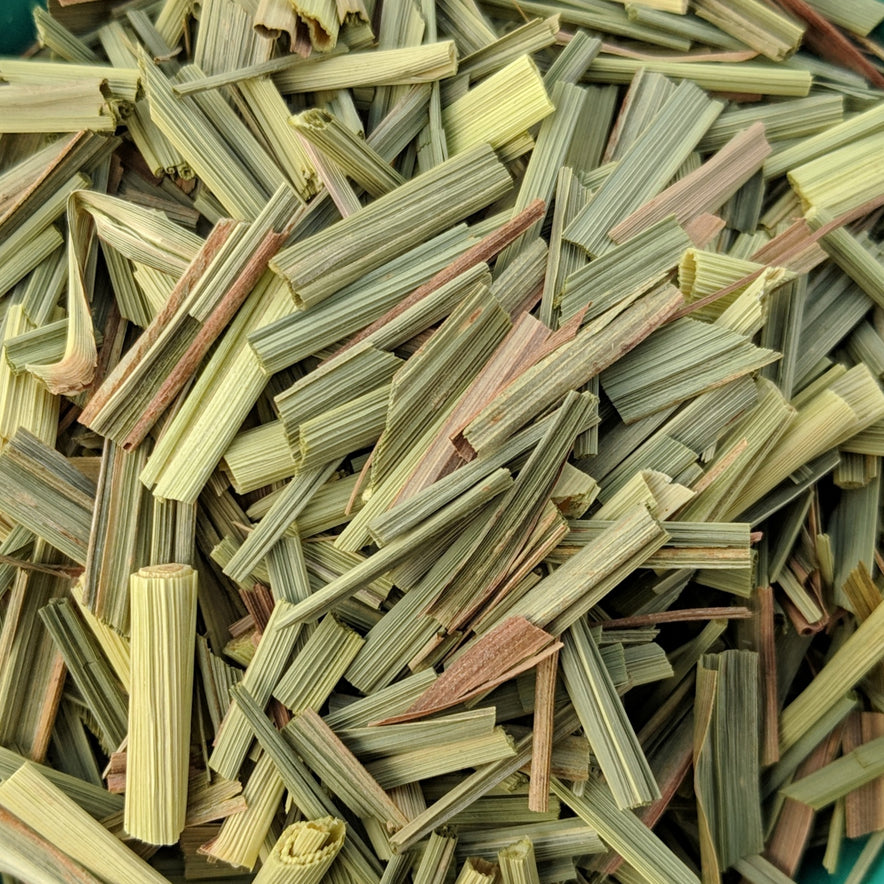
Cretan Lemongrass (Cymbopogon Citratus) | Leaves or Powder | Our Biodynamic Cultivation
Lemongrass, commonly known as citronella, is a tall, stalky plant native to Sri Lanka and South India that is now grown in many nations throughout the world as a herb. The plant's stalks are commonly used in Asian cuisine, but lemongrass may also be used to produce tea. It has a citrus taste and a crisp, lemony scent.
It's a typical Thai culinary ingredient as well as a bug repellant. Lemongrass essential oil is used in aromatherapy to refresh the air, relieve tension, and boost one's spirits. Lemongrass is also used as a folk treatment to help people sleep better, reduce discomfort, and strengthen their immune systems. Lemongrass tea is one of the most common ways to consume it. Continue reading to find out how lemongrass tea might help you achieve these possible health advantages.
Lemongrass includes numerous antioxidants that can help scavenge free radicals, antibacterial qualities that help cure dental infections and cavities, anti-inflammatory effects, and is frequently used as a medicine for upset stomach, stomach cramps, and other digestive disorders.
Finally, it aids in cholesterol regulation and alleviates menstruation cramps, bloating, and hot flashes.
Use
Lemongrass may be used to lend a hint of sweet lemony flavor to marinades or grilled meats, as well as to brighten curry pastes and simple sauces. Powdered lemongrass adds a fresh lemon taste to curries, soups, stews, and stocks.
You can also use it for Lemongrass tea, and it has a mild lemony flavor without the astringency or tanginess of traditional lemons. It has a sharp, brisk finish and is moderately sweet. When brewed, lemongrass tea turns a light yellow color and has a lemony scent.
Recommended Dosage
◉ 1-3 teaspoons of loose tea (or 3g up to 3 times) daily. If more than one herbal mixture is consumed at the same period of time, reduce the amount of tea accordingly.
◉ When herbs are used for an extended period of time, it is suggested to consume a herbal remedy with a ratio of 3 to 1. For example:
- If you choose to take it for 3 weeks, have a one-week pause.
- If it is taken for a 30-day period, have a 10-day pause.
That does not apply to herbs and fruits that have a laxative effect.
Notes
◉ Should be stored in airtight glass containers -in a cool, dark, and dry place- to preserve the flavor, texture, and properties.
◉ Before adding a new herbal remedy or supplement to your daily routine, you should consult with a medical doctor or holistic health practitioner.
Herbal Tea Brewing Instructions
- Heat the water to just the point when it starts to boil.
- Add 1 teaspoon of loose tea, to a tea infuser or tea bag, for every 180ml - 240ml of water.
- Pour the heated water (right off the boil) over the tea, cover your cup, and steep for 7-10 minutes or longer.
- Add honey or stevia for sweetness, if desired.
Follow these additional steps to make the perfect cup of tea!
